On January 18, 2016, Prince Albert and Princess Charlene had an audience with Pope Francis in the Vatican. It was Princess Charlene’s meeting the Pope after attending his inaugural mass in 2013.

It was also Her Serene Highness’s second time wearing white to meet a Pope . Typically, the Privilege du Blanc is only granted to only 7 ladies around the world.
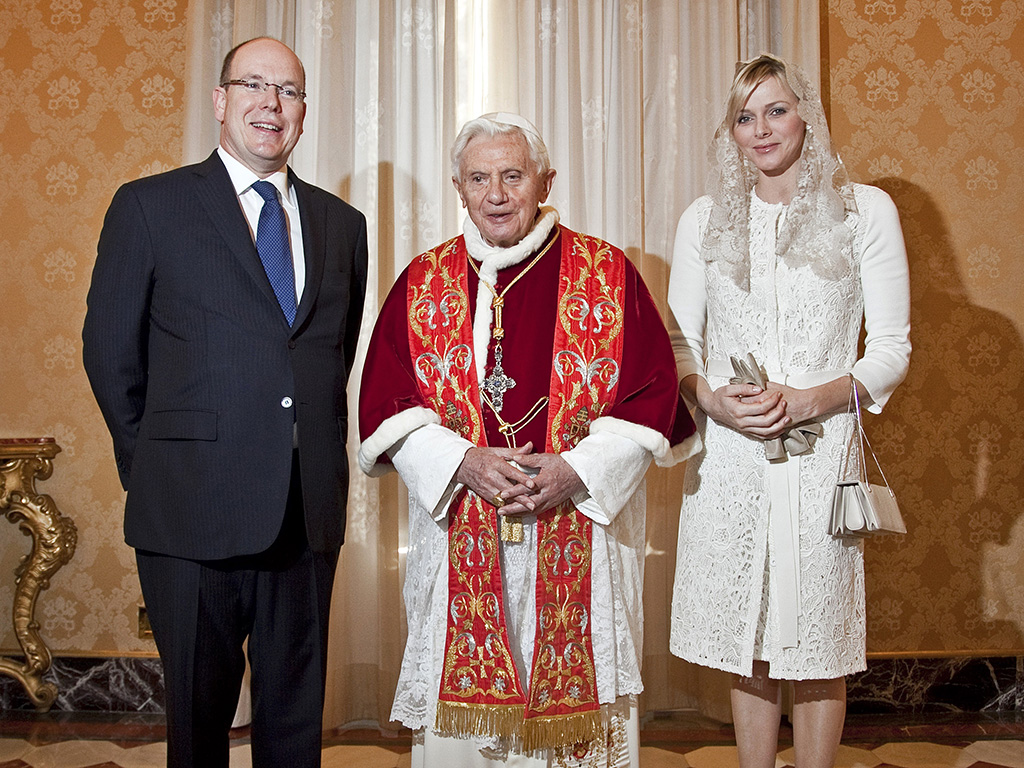
Pope Francis has been actively relaxing the rules of the Catholic Church but it was his predecessor, Pope Benedict XVI, who extended the privilege to the Princess of Monaco in 2013. This is why Princess Grace wore black when meeting Popes.

While the privilège du blanc is well, a privilege to catholic royals (Princess Charlene converted to Catholicism before his marriage and has been devout ever since), it has some rather misogynistic roots.
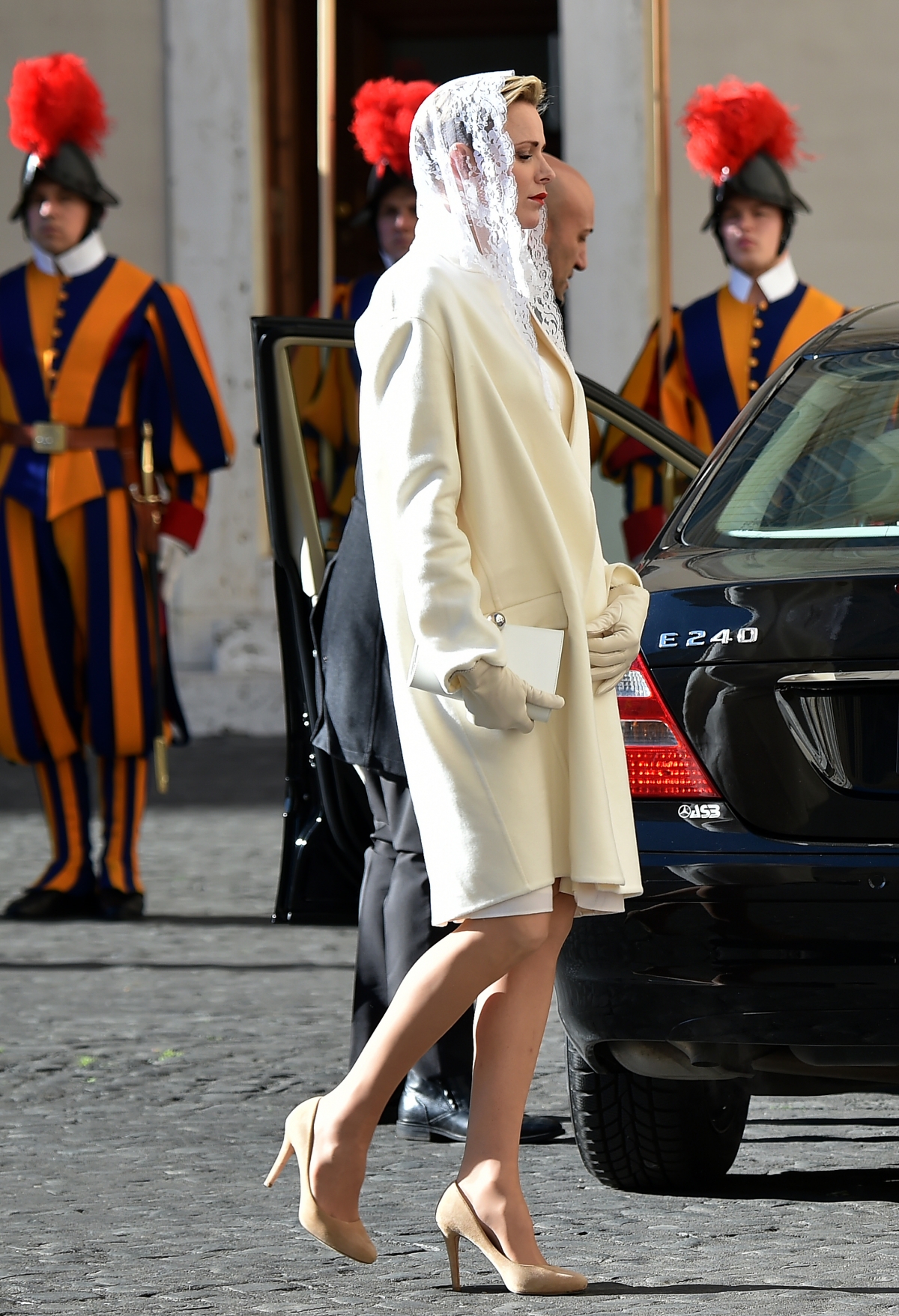
For centuries, women meeting the Pope were required long black dresses (which was then relaxed to short black dresses). Black signifies piety and humility (because a woman in colour is considered a temptress). Based on that logic, only consorts of Catholic sovereigns are allowed to wear white. Even Queen Maxima, a Catholic married to a Protestant king, is not granted this dispensation. But things are slowly changing. In 2014, Queen Elizabeth met Pope Francis in Rome and wore lilac. This was a significant shift for Her Majesty who has met 4 other pontiffs and always wore black and a mantilla. The explanation for the colour choice was that it was an informal, protocol-light visit, but this never would have happened 20 years earlier.
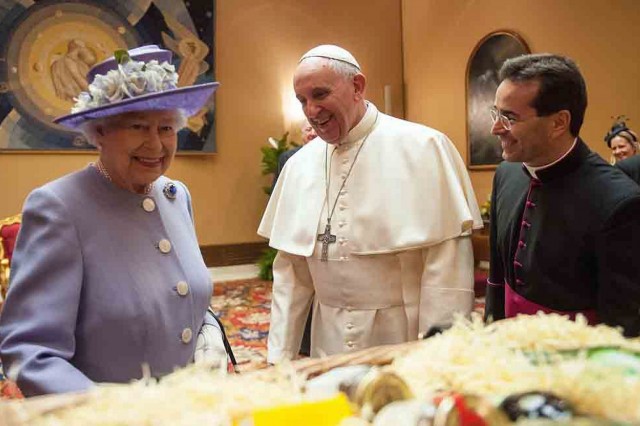
This change of attitude is a subtle acknowledgement from the Vatican that a woman’s virtue is not defined by what she wears or how she looks. A lesson that many of us sadly don’t seem to have learned quite yet.

Just like when HSH met Pope Benedict XVI in 2013, she wore Dior in 2016. Cream coat and dress, white mantilla, and nude pumps (by Jimmy Choo). Women are also required to wear closed-toe shoes, I wonder what the person (a man) who came up with this rule was thinking, but I digress.
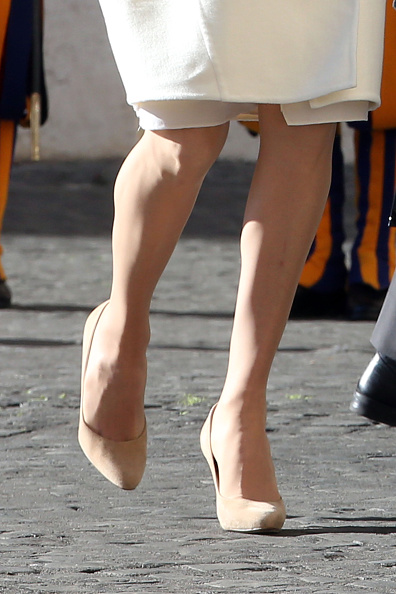
In 2013, Princess Charlene kept her makeup very subtle with nude, albeit slightly glossy, lipstick. In 2016, she seemed to show a bit more confidence as Valerie B., her stylist, hair and makeup artist at the time applied this red lipstick. Red lipstick was becoming HSH’s signature, and so Valerie didn’t see the need to opt for a more neutral look. Again, showing that a woman’s manners is not defined by how she looks. Have I made this point enough?
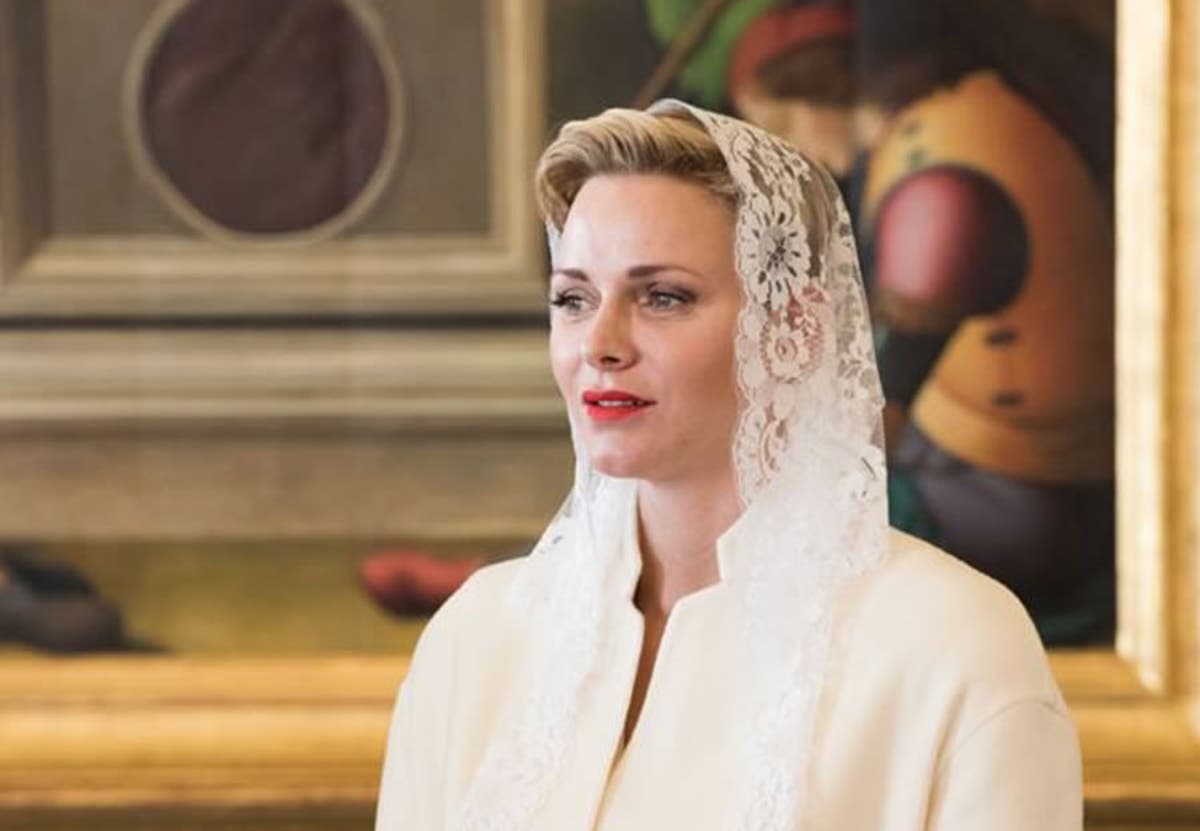
Both of Princess Charlene’s Vatican looks are triumphs in my book. They’re traditional and respectful to the church and the Pope, but they’re also a sign of progress towards a world that’s fairer to women. However, I look forward to the day when a princess (or better yet a commoner) wears a red dress to meet his holiness without the colour of her garment making it to the news. This might not happen until Princess Gabriella is old enough, though. But here’s hoping!
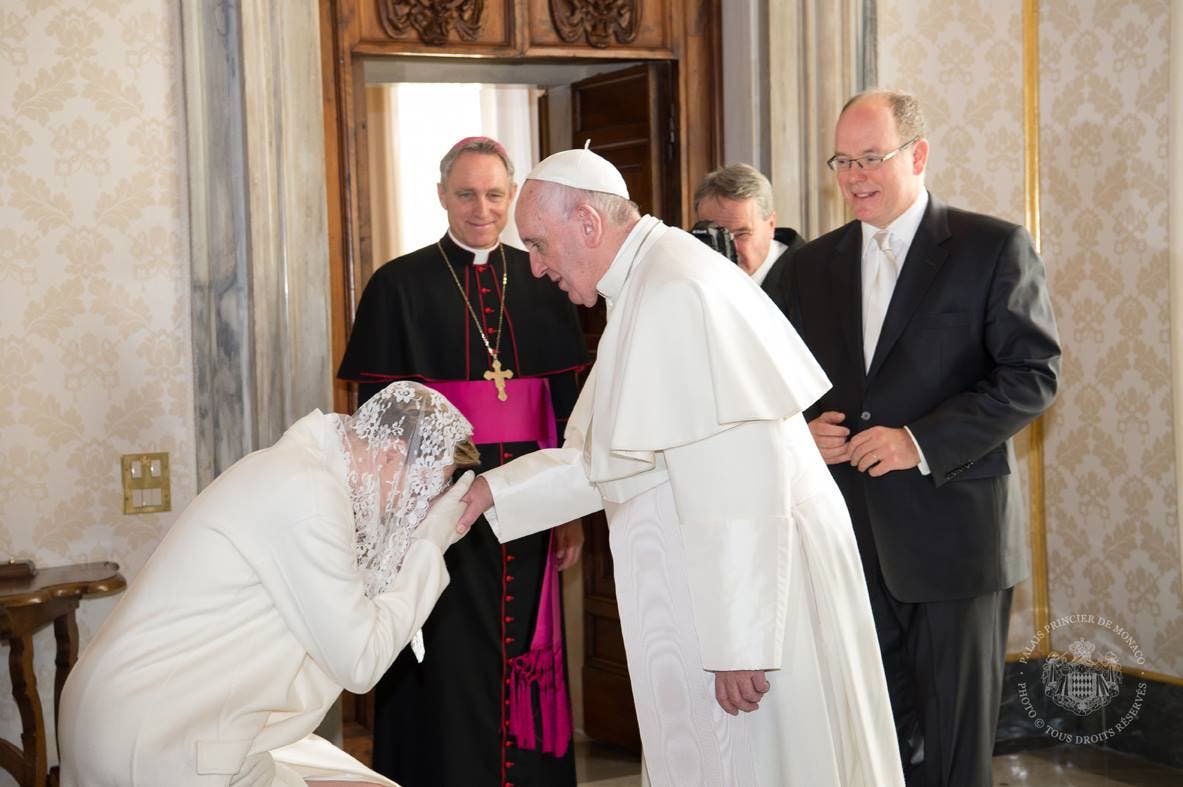

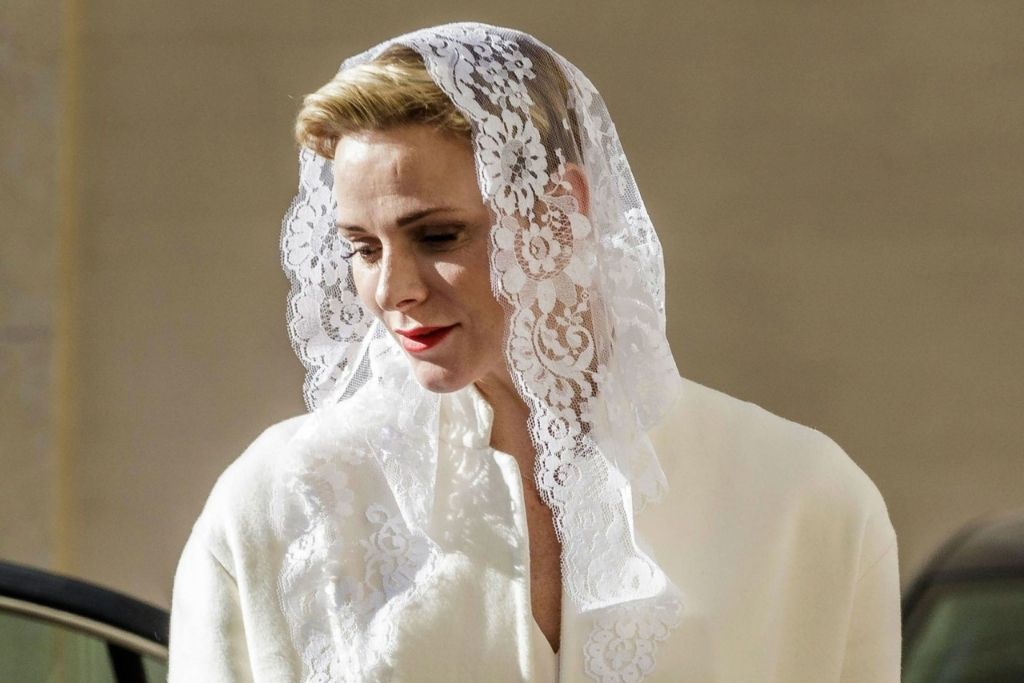
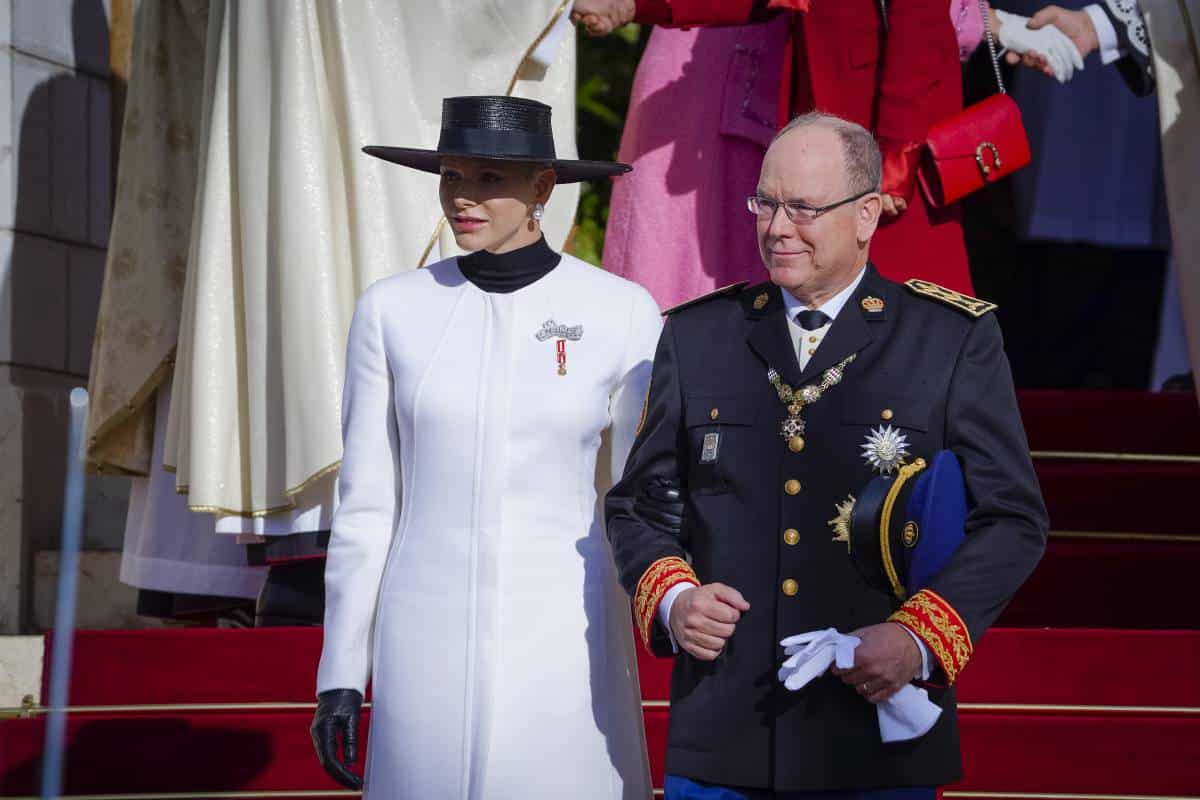




Assolutamente ridicolo permettersi di osare dire che la Santa Madre Chiesa sia stata misogina o maschilista. Il decoro e la decenza rendono la donna negli abiti semplicemente stupenda, raffinata, signorile, decente, decorosa, nobile e si presta ad attirare su di sè l’ammirazione di tutti per le sue virtu interiori dopo essere stata messa in gradi farle emergere coi comportamenti esteriori.
Per la donna
Per quanto riguarda l’ornamento di una donna l’apostolo Paolo dice: “Le donne si adornino d’abito convenevole, con verecondia e modestia: non di trecce e d’oro o di perle o di vesti sontuose, ma d’opere buone, come s’addice a donne che fanno professione di pietà” (1 Tim. 2:9-10), e Pietro lo conferma dicendo alle mogli: “Il vostro ornamento non sia l’esteriore che consiste nell’intrecciatura dei capelli, nel mettersi attorno dei gioielli d’oro, nell’indossar vesti sontuose, ma l’essere occulto del cuore fregiato dell’ornamento incorruttibile dello spirito benigno e pacifico, che agli occhi di Dio è di gran prezzo. E così infatti si adornavano una volta le sante donne speranti in Dio….” (1 Piet. 3:3-5).